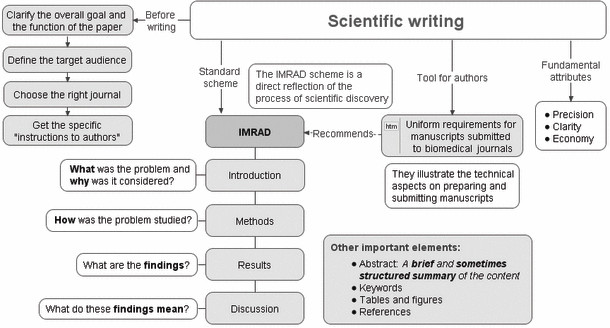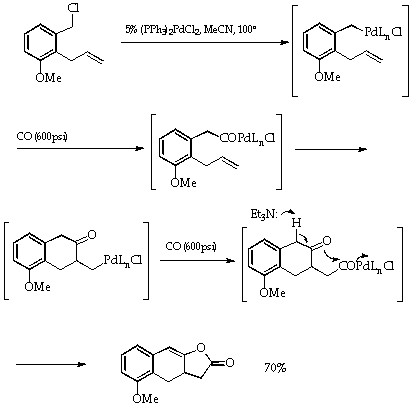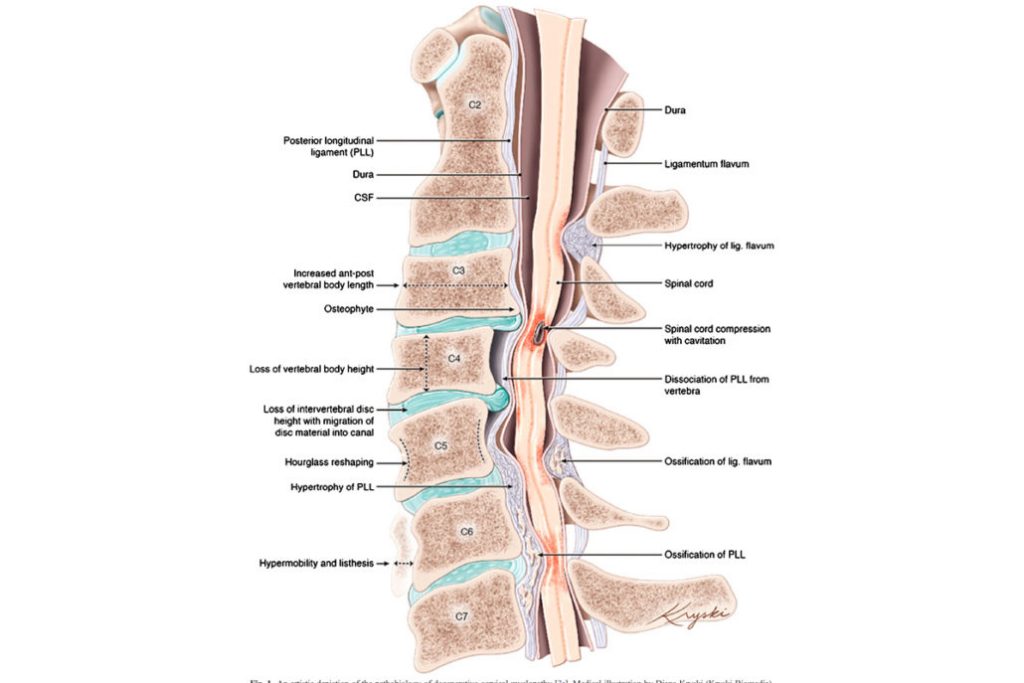It is time to start preparing for the competition itself!
The science competitions will be looking for both a written paper and an oral presentation. Before diving too deep into these things make sure you and your students have reviewed what will be expected from the competitions. Here is the list of rules for the JSHS competition and hopefully you had already planned for the due dates. It can also help to see what the judges are provided to score these components. For the JSHS competition you can find these things on their website.
Writing the Research Paper
This may be a scary venture for some of your students. It might be the first time that they have ever really written a scientific paper. Technical writing can be very different from the many papers they have written for other courses. Luckily, technical writing is… well technical, and as such has a very defined structure.
The main elements of such manuscripts are:
- Title Section
- Abstract
- Introduction
- Results and Discussion
- Conclusion
- References
Title Section
The title section is just that, the title and author names. Many competitions may already have a “cover sheet” that you fill out and place on the paper but if not consider making one yourself.
Abstract
The abstracts that we write as scientists are more commonly referred to as informational abstracts. These abstracts are presented to the reader for free prior to purchasing the full article.These abstracts also show up in many of our search databases when attempting to find articles that might be of use to our research. In this way they act to be the embodiment of our entire article in just one paragraph and if written poorly may turn a reader away before ever getting a chance to read the full article. These too have all the elements of the paper within this single paragraph:
- Introduction/purpose
- Scope
- Methods
- Results
- Conclusions
- Future Work/Recommendations
Purdue’s Owl website has some great information on writing abstracts, but again do not forget to check in those competition guidelines.
Introduction
- To do this you may need to think about what elements of your project need to discussed
- Example elements
-
- What is sublimation?
- Why might it be possible for ferrocene?
- What are alternative purification techniques?
-
State the purpose of the work in the form of the hypothesis, research question, or problem you investigated (single paragraph)
- Example elements
- Sublimation provides a faster more efficient approach to purifying ferrocene
Briefly explain your rationale and approach and, whenever possible, the possible outcomes your study can reveal. (often a part of the previous paragraph)
- Example elements
- Efficiency of the purification will depend both on final purity as well as yield
- The process may be more efficient in one or both of these areas
2. Style: You may have been told that scientists write in the passive voice and no other field does. Well that is true about our experimentals/methods but NOT the introductions! Use the active voice as much as possible in the intro. Avoid using the first person in a way that says I did this or we studied that. Such language is only acceptable if you speak to the past literature as a body of information produced by US or WE as scientists. This is the “royal we.” You can also point out that a body of literature was produced by your lab. For example, “our lab performed a similar study….xx” as in this case you are doing so to point out your expertise in this area. Overdoing this can quick turn pretentious so use with caution.
3. Structure:

The structure of the Introduction can be thought of as an inverted triangle – the broadest part at the top representing the most general information and focusing down to the specific problem you studied. Organize the information to present the more general aspects of the topic early in the Introduction, then narrow toward the more specific topical information that provides context, finally arriving at your statement of purpose and rationale. A good way to organize your thoughts is to plan your intro backwards. Think about you research question or thesis and what information would be needed to explain or rationalize it. Then use this to decide how you will lay out the starting paragraphs. Use this to then thoroughly search the literature for the scientific knowledge known about these topics.
Results and Discussion
In many disciplines these sections are separate, while others combine these sections. By combining these sections you would now offer a slightly deeper interpretation of your data while verbalizing the displayed data in this section. As oppose to verbalizing data only in the results section then later analyzing it in the discussion section. Make sure to see if your competition lays outs various sections of the paper and considers these as different sections.
As far as writing this combined section, you will need to first decide what is the best way to display your data to the reader. Is it?
- Tables
Organized text boxes used to display complex or voluminous data in an organized fashion. This means do not use a table to display a single or even two numerical values. In text, identification is fine in those cases. If you do use a table then you must also use the text of the results section to verbally point out the key elements and trends in the data, but DO NOT verbalize every single data table value. You would do this before moving onto your next set of data. - Schemes
These data are ways of displaying a process. Any process like image (for instance chemical syntheses) are counted as schemes. Like tables, your results section will still need to verbalize the key elements in the table. For example, quantitative data that is hidden or dispersed around the scheme, or other finer elements. Remember to treat your reader as moderately intelligent and do not reinterpret the entirety of the image. You will however, need to move into the discussion portion of the writing an interpret any trends in the data for the reader. For example, discuss why that flow was used, what the efficiency of the reactions (transitions) was, what is the efficiency of the overall process. etc.Examples:


- Charts
Charts are graphical data such as bar graphs, line graphs, scatter plots, pie chart, etc. Another way to look at it is that they groups of data that do not show flow or action like schemes. Walking through the data of these images works much like tables and schemes.Examples:


- Figures
Figures are the most diverse of the ways to display images, but are best characterized as “images.” They could be images taken from instrument cameras, drawn with digital software, or otherwise don’t fall into one of the other categories. These can be the most difficult to discuss due to the variability in what constitutes a figure. As part of the “results,” you need to mention what makes the image worth including or what the image is of. Then as part of the discussion, you would interpret the significance of the image.Examples:

Regardless of how you choose to display the data for your publication each item needs a caption. Captions should say enough about the data such that the data is understood without referring to the main text. However, this is not a substitute for mentioning the data in the text. Every data element must be referred to within the body of the text.
Numbering
- Figure and table numbers end with a period or colon like “Figure 3.” Or “Figure 3:” depending on a journal’s rules.
- Figures and tables are numbered consecutively throughout the thesis but independent from each other. Meaning you can have a Figure 1 and Table 1.
Have other formatting questions… Yeah we all do… always. Normally you can simply find an article within a science journal you are trying to publish and follow the formatting within. Any published article has already been screened by their own editors and modified to meet their guidelines. Sometimes it can just take a while to find an article that has rarer elements (like pie charts – eww). In a competition the formatting may not be explicit so you can find a journal that is representative of the field your project belongs to and mimic that formatting.
Conclusion
“The Conclusion section presents the outcome of the work by interpreting the findings at a higher level of abstraction than the Discussion and by relating these findings to the motivation stated in the Introduction.”
The conclusion is the closing portion of the written document and must avoid being just an extension of your discussion section. This means you can not simply restate your conclusions in an abbreviated form. This is the time to “cycle back” to your introduction and your research question. Talk about whether the work was successful or unsuccessful in setting out to answer your research question. Finalize the section with explaining how the work could be continued. Does it have applications? Was your conclusion not strong enough and if so what would it take to strengthen it?
Successfully writing a conclusion should only take a single paragraph in most journal articles. However, in some science competitions may be looking for more. We also find that they can ask for some pretty specific requests. For instance, in chemistry we tend not to include references in this section of our articles since the introduction was suppose to give a complete literature background but the VJAS competition requires literature references to support your conclusions. So check those guidelines!
References
This is pretty straight forward, well kinda. Science tends to use end notes and not footnotes. Beyond that there are so many ways to reference content (MLA, Chicago, ACS, etc.) but not all competitions give clear guidelines on what they want. For example, VJAS lists guidelines but JSHS does not explicitly state a preferred format. In the case of JSHS it is then fine to chose the format that you are more comfortable with. If you are not yet comfortable with any style then we again advise that you find a journal article that is representative of your field and mimic that.
On source content… It is our advise to stick strictly to peer-reviewed journal articles, but if you must use a non-peer reviewed article then make sure you have met the competitions requested limit of references without including the non-peer reviewed article.
Preparing for the Oral Presentation Portion
Our national team has some great advice here and this was taken directly from the Rules of the Competition.
Remember, you are the expert. No one in the audience knows as much about your research investigation as you. Therefore, remember to explain your research in enough detail so the audience will understand what you did, how you did it, and what you learned.
Whenever possible, avoid jargon or unnecessary terminology. If it is essential to use specialized terms, remember to explain the specialized term briefly. Give your audience enough time to understand what you are trying to convey.
Graphs, tables and other representation help explain your results. Keep them simple and uncluttered. Focus on important information; for example, remember to name the variables on both axes of a graph, and state the significance of the position and shape of the graph line.
Deliver your presentation at a comfortable pace. It helps to practice your presentation before a non-specialized audience. Practice will help perfect the presentation and the timing. Do listen to the advice of your non-specialized audience but also get help from a teacher or other advisors as needed.
And remember, practice practice practice!
JSHS Requirements for the Oral Presentations
Session Timing
The research presentation may not exceed 12 minutes, followed by a maximum 6-minute question period. A session moderator will aid the student speaker in maintaining this schedule and in fielding questions from the audience. The procedure for maintaining the time includes a 10-minute signal for the student, and finally a 12-minute signal. At the 12-minute point, the student speaker must stop the presentation even if he or she has not finished. Following the presentation, the session moderator will ask for audience questions. The speaker may entertain questions while the exchange appears interesting and relevant. Questions intended to harass the student speakers will not be allowed by the session moderator. The speaker should repeat a question before answering so the audience may understand the entire dialogue.
Use of Audio Visuals – Available equipment (at nationals)
Available audio-visual equipment in each session at National includes: (1) LCD projector; (2) projection screen; and (3) a laser pointer. Additionally, PC-based computers will be in each session room configured with Microsoft PowerPoint and Adobe Acrobat. Students must come prepared to transfer their presentation to the PC-based computer prior to the day of the oral presentation.
Equipment operators will not be available in each session. Students should number visuals in sequence so the presenter can easily re-show one. Many times, visuals are re-shown during the questioning period.
Hopefully this module has given you and your students a window into what to expect, but if not please feel free to contact us at JSHS@longwood.edu!

